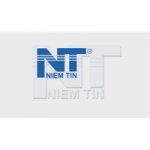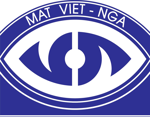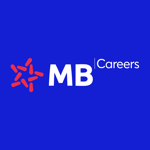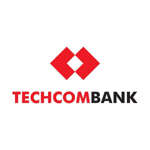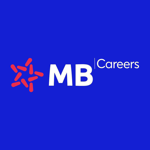Mô Tả Công Việc
1. Define the future state of integration architecture in particular and participate in defining future state technology architecture in general
- Works with EA peers (e.g., enterprise, business, information, solutions and security architects) to analyze enterprise business context (business strategy and trends), as well as change requirements in other enterprise architecture viewpoints (such as business, information and solution) to derive the future state technology architecture. This includes defining the requirements, principles and models that guide technology decisions for the enterprise.
- Be accountable for integration architecture
- Leads the analysis of the current technology environment to detect critical deficiencies, legacy and technical debt, and recommends solutions for improvement. In addition, leads the analysis of technology industry and market trends to determine their potential impact on the enterprise as well as on the enterprise technology architecture.
- Coaches, mentors and collaborates with technical subject matter experts and EA peers to develop technology architecture that enables and drives new business capabilities and operating models.
- Drives digital innovation by leveraging innovative new technologies and approaches to renovate, extend, and transform the existing core technology base and IT estate.
- Defines high-level migration plans to address the gaps between the future and current state, typically in sync with the IT budgeting or other capital planning processes.
2. Analyze and Evaluate Technology
- Understands technology trends and the practical application of existing, new and emerging technologies to enable new and evolving business and operating models.
- Guides technology investment decisions based on analysis and evaluation to drive targeted business outcomes.
- Helps the enterprise architect define metrics to measure and demonstrate enterprise technology value.
- Assists with designing the governance, assurance and standards activities associated with ensuring enterprise technology architecture compliance of projects and products.
- Oversees and facilitates the research, evaluation, and selection of hardware and software technology and product standards, as well as the design of standard configurations.
- Identifies the organizational impact (for example, on skills, processes, structures and culture) and financial impact of the enterprise technology architecture.
- Understands, advocates, and augments the business and IT strategies — and, more specifically, EA development and service delivery. Prepared to "sell" the EA process (overall, not just for enterprise technology architecture), its outcome and ongoing results, and to lead the communication or marketing activities needed to ensure enterprise success and use.
3. Lead and Collaborate to Deliver Business Outcomes
- Oversees, or consults on, technology implementation and modification activities (for example, projects and products), particularly for new or shared infrastructure solutions.
- Consults on application or infrastructure development projects to harmonize systems or infrastructure with the enterprise technology architecture and identify when it is necessary to modify the enterprise technical architecture (ETA) to accommodate immediate or future project needs.
- Creates and delivers working, production-ready reference implementations that can be leveraged easily by agile teams
- Works closely with the product managers, product owners and EA peers (e.g., enterprise, business, information, security and solutions architects) to enable infrastructure agility, scalability and resilience to support required product needs throughout product lifecycle.
- Collaborates with business constituents, other EA team members, project teams and staff in various IT functional areas as needed to fulfill the responsibilities described above.
Documents necessary enterprise technology architecture design and analysis work, possibly including project postmortem documentation and metric collection.
Yêu Cầu Công Việc
Trình độ đào tạo/ Educational Qualifications
- Bachelor's degree in computer science, information-technology, system analysis or a related study, or equivalent experience
Kiến thức/ Chuyên môn cần có/ Relevant Knowledge/ Expertise
- Hands-on experience and strong knowledge about API, stream, batch, workflow, messaging integration patterns.
- Strong knowledge on integration patterns and solution
- Strong knowledge and hands-on experience with integration architecture in both on-premise, cloud and hybrid envrironment
- Hands-on experience (deploying, operating, programming, etc.) with cloud providers (ex: AWS, Azure, GCP, etc.)
- Knowledge of various backend development languages (ex: Java, C#, Python..), database (ex: MySQL, Oracle, MongoDB, etc.), frontend development languages and framework (Javascript, React, Vue, etc.)
- Knowledge of many, if not most, aspects of an enterprise technology architecture
- Knowledge of information principles and processes
- Knowledge of financial models and budgeting
- Understanding of network and security architecture
- Understanding and knowledge of system development life cycle methodologies (such as waterfall, spiral, agile software development, rapid prototyping, incremental, synchronize and stabilize, and DevOps)
- Understanding and knowledge of IT service management (ITSM) and Information Technology Infrastructure Library (ITIL)
- Knowledge and understanding of different modeling languages (such as UML and ArchiMate)
- Understanding and knowledge of IT standards and controls
- Exposure to multiple, diverse technical configurations, technologies and processing environments
- Solid understanding of product management, agile principles and development methodologies and capability of supporting agile teams by providing advice and guidance on opportunities, impact and risks, taking account of technical and architectural debt
Các kỹ năng/ Skills cần có
- Excellent interpersonal skills in areas such as teamwork, facilitation and negotiation
- Strong leadership skills
- Excellent analytical and technical skills
- Excellent written and verbal communication skills
- Excellent planning and organizational skills
Các kinh nghiệm liên quan/ Relevant Experience
- Minimum of five years of design and implementation experience in IT, in which at least 3 years in related positions like solution architect or technical lead
Các năng lực liên quan khác
- Organizationally savvy, with the ability to navigate organizational politics.
- Skilled at influencing, guiding and facilitating stakeholders and peers with decision making.
- Ability to articulate new ideas and concepts to technical and nontechnical audiences
- Ability to understand the long-term ("big picture") and short-term perspectives of situations
- Ability to translate future-state business capabilities and requirements into solution architecture requirements
- Ability to propose and estimate the financial impact of solution architecture alternatives
- Ability to work creatively and analytically to solve business problems and propose solutions
- Ability to quickly comprehend the functions and capabilities of new technologies
- Demonstrated ability to work well with others and be respected as a leader
Characteristics/Behavior
- Trusted and respected as a thought leader who can influence and persuade business and IT leaders and IT development teams.
- Technology neutral: remains unbiased toward any specific technology or vendor choice, and is more interested in results than personal preferences
- Displays intellectual curiosity and integrity
- Motivated and driven by achieving long-term business outcomes
- Ability to work effectively in a team environment and lead cross-functional teams


